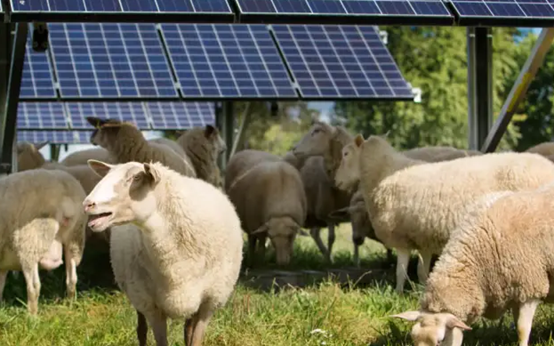Written by Aggeliki Marinou, environmental specialist at Wattcrop.
The combination of agriculture-livestock farming with photovoltaic parks is widely known abroad and has begun to be incorporated in Greek society, as the need to protect biodiversity, combined with energy efficiency is essential. More specifically, photovoltaic parks can be allocated for grasslands and wildflower meadows, which provide habitats for pollinators, birds and wildlife, as well as for sheep grazing.
The site is suitably landscaped so that animals can live in harmony with photovoltaic panels. The bases of the photovoltaic panels are placed at an appropriate height so as not to obstruct the passage of grazing animals and to ensure that there are passages for the passage of animals through the park.

Animals (mainly goats and geese) will be able to graze within the fenced area of the photovoltaic park, thus clearing the area of high vegetation that could negatively affect the performance of the photovoltaic plant. Controlled grazing is an effective and low-cost way to control vegetation and limit soil erosion. The space under the photovoltaic panels can also be used for resting, shading animals, and protecting them from rain.

Alongside grazing, easy and cost-effective methods can be used to protect biodiversity. A good example is the sowing of a different mixture of wildflowers and grasses on all or part of a site. In addition, where necessary, it is possible to plant appropriate species to fill existing gaps between plants and create a harmonious coexistence between them. Also, the site of a photovoltaic park can provide protection for specific species such as reptiles, amphibians and birds as it can act as a kind of habitat.

Grazing animals within photovoltaic installations benefits not only the companies but also the local communities. The use of livestock in vegetation management minimises the risk of fire spread as the park area is free of dry grasses. By keeping vegetation under control, the PV project becomes a natural firebreak zone, helping to prevent the spread of a fire should it break out in a neighboring area. Also, the implementation of agro-photovoltaics helps to increase the amount of grazing land for livestock and by extension this means that local sheep/cow rearing businesses have a safe area where they can graze their animals in the long term. A further advantage is that grazing saves fuel (which would be needed for mechanical cutting), and so we avoid CO2 emissions into the atmosphere and avoid the use of chemical herbicides which can cause pollution of both soil and water resources.
We can therefore conclude that it is possible for livestock farming to coexist harmoniously with electricity production and that this combination can bring enormous benefits for the environment, biodiversity and the ecosystems concerned.

